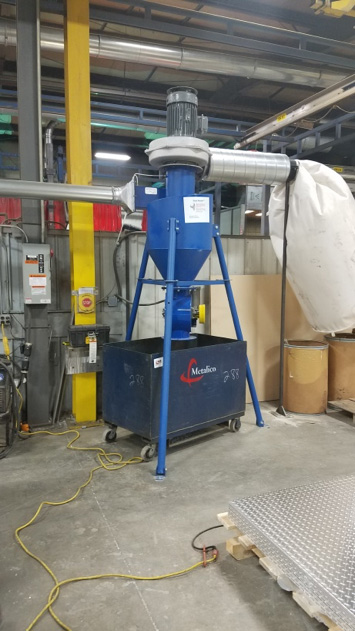Bridging Material
One of the major problems with dust collectors is bridging in the hopper. Bridging is when dust builds up above the dust discharge flange. It forms a “bridge” preventing dust from leaving the hopper. This happens with sticky, fibrous, and irregular shaped materials. When not caught, this can cause dust to fill up the hopper and affect the removal efficiency of the dust collectors. Dust collector hoppers are not designed to store dust, only to collect them so they can be removed from the system via the airlock.
There are multiple ways to break up the bridging of the dust vibrators and air canons are often used. These are good as a reactive solution to a problem. But if you know your material bridges, it is better to design the hopper and the airlock to prevent the bridging in the first place.
Large rectangular openings help prevent dust from bridging. Square and round openings provide the best support for material bridges, but a rectangular opening doesn’t support the center of a bridge, thereby causing it to fail, which—in a dust collector hopper—is a good thing.
The Aerodyne Mighty Whopper rotary valve is a custom valve designed for rectangular hoppers. The Mighty Whopper has a robust construction for challenging applications such as fiberglass.


